


Telegraph branch




She was named after the then Crown colony of The Gambia, and has been the only ship of the Royal Navy to bear the name.
http://en.wikipedia.org/wiki/HMS_Gambia_%2848%29
Ships and Defence News Past and Present



Telegraph branch




She was named after the then Crown colony of The Gambia, and has been the only ship of the Royal Navy to bear the name.
http://en.wikipedia.org/wiki/HMS_Gambia_%2848%29



The ship was built in the United States in 1944 as Satinwood (YN-89) as a net tender of the Ailanthus class (but later redesignated as AN-76, a net layer) and transferred to the Royal Navy under Lend-Lease in August 1944. Commissioned as HMS Pretext (Z284), she served the United Kingdom until she was returned to United States Navy custody in November 1945. Sold by the United States Maritime Commission in 1947, she served as a research vessel for the Falkland Islands Dependencies Survey under the name SV John Biscoe. She was briefly renamed Pretext when another ship was assigned the John Biscoe name, before being sold to the Royal New Zealand Navy, renamed Endeavour, and employed in supporting the Commonwealth Trans-Antarctic Expedition and subsequent New Zealand research activities in Antarctica. Sold again in 1962, the ship, renamed Arctic Endeavour for sealing work in the northern hemisphere, foundered off the coast of Canada in November 1982.
https://en.wikipedia.org/wiki/HMNZS_Endeavour_(1944)
The Royal New Zealand Air Force’s (RNZAF) Squadron Leader Sean Perrett will be at the controls of a very special warbird this weekend when the restored P-51D Mustang debuts at Warbirds Over Wanaka.
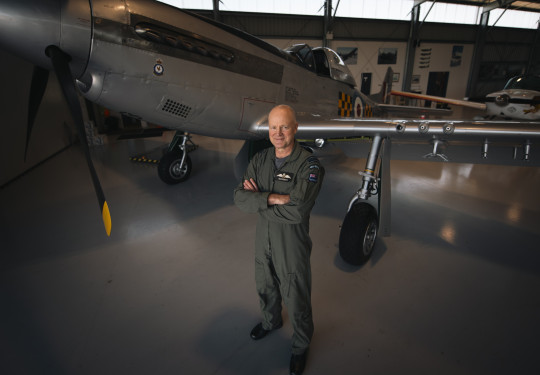
Ohakea-based Squadron Leader Perrett has nearly four decades of flying experience and is Flight Commander of the Air Force Heritage Flight – where Biggin Hill Trust aircraft are flown by RNZAF pilots.
Former RNZAF P-51, serial number NZ2423, built in 1945, spent 56 years in a farm shed near Nelson before the trust restored it to flying condition last year.
“It was one of 30 P-51D aircraft delivered to the RNZAF at the end of the Second World War,” Squadron Leader Perrett said.
“When the aircraft was sold it had flown only about 260 hours which must make it one of the lowest-time Mustangs in the world and one of the few still with its original engine.
“I’ve been flying at Warbirds since 2004 and flying any type of warbird is a privilege, but to be flying in the debut of an ex-RNZAF Mustang as a serving RNZAF pilot is very special,” he said.
Squadron Leader Perrett said some people thought such aircraft were so valuable that they should be put safely in a museum and never flown.
“But I think that it’s important for people to see and hear them flying.”
Also taking part in the Heritage Flight display at Wanaka will be a 1944 Spitfire Mk IX flown by Squadron Leader Stuart Anderson.
Every RNZAF aircraft type will be seen at Warbirds Over Wanaka, some conducting flying displays, others on static display for the public to get up close, and some providing transport support to the biennial event.
Chief of Air Force, Air Vice-Marshal Darryn Webb, said events such as Warbirds Over Wanaka provided an opportunity for the RNZAF to display its aircraft capability, showing how it can support the people of New Zealand.
“Domestic airshows and display activities enable the RNZAF to inspire, educate and engage with the communities they serve,” he said.
“Not only do they allow for the demonstration of skills and capabilities of the RNZAF, they also support the preservation of the RNZAF’s history.”
Warbirds Over Wanaka airshow is held from Friday 29 March to Sunday 31 March at Wānaka Airport.


From Tudor Collins: HMNZS Claymore operating the #Auckland net boom suspended between barriers of piles on either side of the Waitematā Harbour from Maungauika – North Head to Bastion Point used as defence against enemy torpedoes, submarines and naval vessels 1943



HMNZS Wakakura (T00) was originally a First World War Castle-class naval trawler built in Canada. She was purchased by New Zealand in 1926 and transferred to the Royal New Zealand Navy when it was established in 1941. The Wakakura remained in commission throughout the Second World War and was sold to Tasman Steamship Co and converted to a refrigerated cargo vessel in 1947.
“A little trawler paid a big part in the lives of New Zealand’s pre-war and wartime naval reservists. Her Majesty’s Trawler (later HMNZS) Wakakura, purchased from the Royal Navy scrap heap ‘as is, where is’ to be a training ship, also left an impression on various wharves and a couple of other ships as she roamed from port to port around New Zealand instructing young would-be sailors in naval procedures.” [1]
She displaced 530 tons standard, could manage 10 knots (19 km/h) and was equipped with a 4-inch (100 mm) gun during World War II.
Wakakura is a Māori word which means “precious canoe” or “training boat”.

Within the anticipated MHR framework, Leonardo will offer a Wildcat Support Centre in Auckland for the new helicopters.
John HillMarch 27, 2024
Share this article
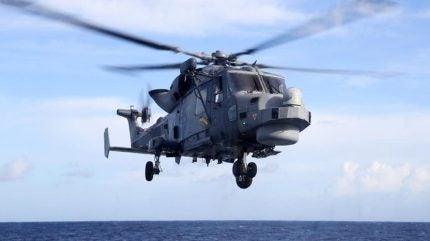
Leonardo UK has proposed its AW159 Wildcat rotorcraft as a solution to the New Zealand Defence Force (NZDF) as a solution for its Maritime Helicopter Replacement (MHR) programme.
At the end of April 2023, the NZDF put forward a request for information for a prospective platform to replace its eight SH-2G(I) Seasprite helicopters that have been in service for the last ten years.
New Zealand’s MHR programme comprises a medium naval helicopter, through-life support solutions, training system solutions, misison support systems, system integration sevrices and uncrewed aerial systems (UAS).
As part of its offer, Leonardo will establish a Wildcat Support Centre in Auckland, in the north of the country. In additon, the company pledges that the agreement would provide a major investment in skills, design and manufacturing, sustainment of jobs for local businesses and potential opprotunities for veterans.
Leonardo designed the Wildcat from concept as a multi-role ‘organic air’ helicopter with ship/air interface characteristics and compact dimensions for single spot deck operations.
A Leonardo UK spokesperson told Naval Technology that it recognises that the Royal New Zealand Navy (RNZN) has a unique set of requirements for its maritime helicopters, which are an integral capability of its ANZAC frigates, offshore patrol vessels, and larger vessels.
Flying in the skies above Wānaka will be a very special experience for Royal New Zealand Air Force (RNZAF) C-130 Hercules co-pilot Flight Lieutenant Angus Knox.
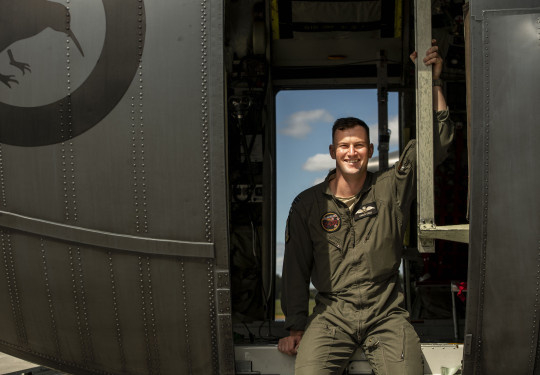
Growing up in Dunedin, the 31-year-old spent every holiday at the lakeside Central Otago town, and now gets to fly over the spectacular landscape as part of Warbirds Over Wanaka.
“I’ve had a connection to Wānaka my entire life and my parents now live there in our long-term holiday home. It’s a special place to me.”
He’s set to co-pilot a C-130H (NZ) Hercules on the fleet’s final airshow before the aircraft are retired early next year.
“As a pilot, I haven’t had a chance to land a Hercules there yet, so I’m excited about that as it’s always a really special place to fly,” Flight Lieutenant Knox said.
“I’ve only been flying the C-130H for a couple of years but it’s a special aircraft to fly, with such a big flight deck.
“There’s heaps of camaraderie with the crew and it’s really special to be a part of history with the aircraft type, and it’s a privilege to stay until the end of an era.”
Flight Lieutenant Knox said he’d wanted to be a pilot since his childhood, and follow some family footsteps into the Air Force.
His uncle flew for No. 42 Squadron and the RNZAF’s aerobatic display team the Red Checkers; the predecessors to the modern-day Black Falcons.
“I was working as an agriculture consultant, but I’ve always had an interest in flying and decided it was time to change, so I joined the Air Force in 2017.
“My uncle was in the RNZAF, and my granddad served in World War II as well, flying Mosquitos as a night fighter based in the UK,” Flight Lieutenant Knox said.
His family will be close by coming along to support him flying in his first airshow.
“When you’re flying you’re not really aware of the crowd, but the flying itself is really exciting and I know my family will be there watching,” he said.
Every current RNZAF aircraft type will be seen at Warbirds Over Wanaka, subject to availability.
Some will carry out flying displays, while others will be on static display for the public to get up close to. Some will be working to provide transport support to the biennial event.
The Air Force Heritage Flight will also be at Wānaka, including a recently restored P-51 Mustang in its first public flying display.
Chief of Air Force, Air Vice-Marshal Darryn Webb, said airshows like this supported the preservation of New Zealand’s aviation past and present.
“They provide an opportunity for the NZDF to display its aircraft capability, showing how it can support the people of New Zealand. Domestic airshows and display activities enable the NZDF to inspire, educate and engage with the communities they serve.
“Not only do they allow for the demonstration of skills and capabilities of the NZDF, they also support the preservation of the NZDF’s history,” Air Vice-Marshal Darryn Webb said.
A new RNZAF P-8A Poseidon will also be seen in action for the first time, demonstrating a simulated raft drop with a low pass down the airfield.
As part of its final airshow outing, the retiring fleet of Hercules will also be celebrated with a Formation Thunder flypast, handling display, the RNZAF’s Kiwi Blue parachute display and a lakefront flare drop that promises to be spectacular.
Lincoln’s Caitlin Early trained for a career in film and music, but her childhood holiday haunt Wānaka will provide the stage and the Royal New Zealand Air Force (RNZAF) the soundtrack as aviation buffs return to Warbirds Over Wanaka this Easter.
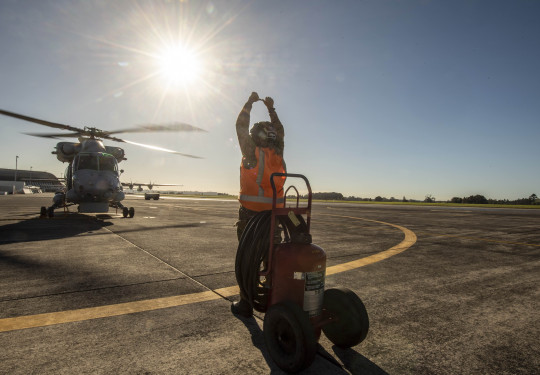
The 26-year-old avionics mechanic says working at Wānaka will be like coming home.
“I’m looking forward to seeing all the aircraft and Wānaka is so beautiful, I used to go there a lot as a kid in the school holidays,” she said.
On leaving school she earned a degree in film and music, before Covid-19 arrived and she made what she called the “drastic” choice to pivot and enlist in the military.
“My sister was a medic in the New Zealand Army and I saw what great training and opportunities she got, so when Covid hit I made the move.”
She is now part of RNZAF No. 6 Squadron, which looks after the Seasprite helicopters for the Royal New Zealand Navy.
It’s the first time Aircraftman Early has attended the Wānaka air show with the RNZAF and she is looking forward to returning to her home ground.
“I’ll be on the flight line and working on ground maintenance at Warbirds. On the flight line, I’m working with the aircraft when it’s flying, refuelling, marshalling, dispatching and daily servicing.
“Marshalling is pretty fun and I love working with the aircraft when it’s in a state of operation.”
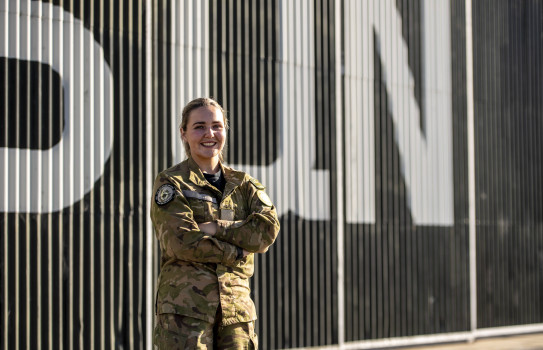
AIRCRAFTMAN CAITLIN EARLY IS LOVING BEING IN THE THICK OF SUPPORTING OPERATIONS FOR THE RNZAF’S SEASPRITE HELICOPTERS
Aircraftman Early said she enjoyed working on Seasprite helicopters.
“I love working with my hands and you’re always working with a great bunch of people. The Air Force gave me the opportunity to do something completely new and I found something I love that I didn’t anticipate.
“I was terrified wondering if it was for me, but the support is there to learn and everyone is here to teach you,” she said.
Aircraftman Early also hopes to deploy to sea with the Navy, once she finishes her senior training.
The biennial Warbirds Over Wanaka was last held in 2018 before Covid-19 cancelled the 2020 and 2022 events.
Squadron Leader Jim Rankin is the RNZAF Air Display Director and said it was exciting to be back in Wānaka after a six-year break.
The show was about more than celebrating aircraft in the air, he said.
“The role demonstrations and handling displays are a chance to practise and sharpen the flying skills required to operate our aircraft across the range of outputs.”
Whenever an aircraft was airborne it required more than just aircrew to fly it – it required technical staff to maintain the airframes, logisticians, refuellers, security forces and firefighters, he said.
“Everyone has a part to play in delivering our military air operations and a deployment such as Wānaka is just like any other military exercise.”
Royal New Zealand Navy Supply Technician, Sub-Lieutenant Henry Cunningham shares his experience on deployment to the icy continent at the bottom of the planet.
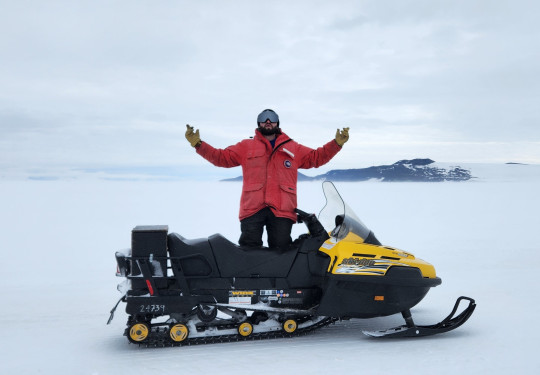
Since arriving in Antarctica on October 16th, I’ve had a multitude of once-in-a-lifetime experiences and had the pleasure of meeting some truly fascinating individuals during my six-month deployment.
The initial week tested my resilience with wind chill temperatures plummeting to as low as -30 degrees, prompting me to recognise the importance of having an abundance of Extreme Cold Weather (ECW) gear at the ready. Despite the harsh conditions, I’ve explored pressure ridges outside Scott Base, sped across the sea ice on a snowmobile, paid a visit to Shackleton’s Hut, and marvelled at seals navigating the icy terrain while penguins waddled nearby.
McMurdo’s doorstep is home to Observation Hill, which showcases a 360-degree view of Mt Erebus, the Ross Island Sea, and the neighbouring Scott Base, creating a breathtaking backdrop for the local hikes, including Castle Rock Loop and the Armitage Trail.
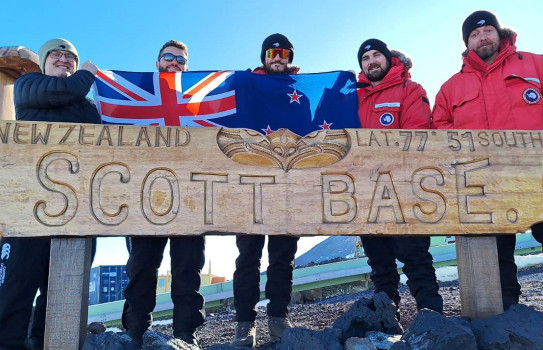
Embracing the unique culture at McMurdo has been a highlight, resembling life on ship with a shared purpose of supporting science and upholding the Antarctic Treaty, and participating in activities like the USAP Mass Casualty Incident (MCI) team and the Ross Island Yacht Club’s engaging presentations. The absence of Wi-Fi in most areas has unexpectedly become a blessing, freeing us from the grip of our phones and fostering a vibrant atmosphere of social interaction, from lively karaoke nights to competitive pool tournaments, and entertaining station-hosted events and social clubs. Weekly science talks have been enlightening, unveiling the remarkable discoveries happening in Antarctica, spanning from climate change studies to NASA’s exploration of the life cycle of interstellar gas in our Milky Way and the examination of sea ice nearly a million years old.
The recent arrival of the icebreaker vessel USCGC Polar Star in our Antarctic backyard signals a crucial phase in our deployment, enabling the berthing of our resupply vessel and a tanker ship at the ice pier in the upcoming weeks. The supply department, bolstered by a fifty-person strong Ship Off-load team, is poised for round-the-clock operations in two shifts, ensuring seamless supply chain movements while the resupply vessel is alongside.
Undoubtedly, this deployment stands as the highlight of my Naval career thus far, and the anticipation for what lies ahead only intensifies as the team navigates through this unique and extraordinary experience in Antarctica.


Breeze back as a coaster. Icebreaker is USCGC Eastwind (WAGB-279) was a Wind-class icebreaker that was built for the United States Coast Guard.
HMNZS Breeze (T02) was a coastal cargo boat which was requisitioned by the Royal New Zealand Navy (RNZN) and converted into a minesweeper.
Breeze was owned by the Canterbury Steam Shipping Company. She was taken up on 3 March 1942, under protest, to replace the Puriri which had sunk in a minefield. She was a sister ship to Gale.
Breeze joined the 25th Minesweeping Flotilla at Tulagi in April 1943. On her arrival she was also formed, with Matai and her sister ship Gale, into the 9th Auxiliary Minesweeping group within the flotilla. They carried out night-time patrol and escort duties under COMSOPAC control. The Japanese were well north by this time, but occasionally made sudden attacks into American strongholds around Guadalcanal.
In July 1943, prior to being fitted with radar, Breeze collided with USS LST-895 off Guadalcanal while patrolling in a monsoon rainstorm. Grazing port to port, she had a boat wrecked.
During convoy escort duty in Ironbottom Sound she was attacked, but not damaged, by dive-bombers.
From time to time the flotilla boats would return to Auckland for refits, usually escorting freighters bound the same way.
By the middle of 1944 the owners were demanding the return of Breeze and her twin Gale. COMSOPAC released her on 10 November 1944.
She was sold to the Philippines in 1964 and renamed Balabac in 1966.